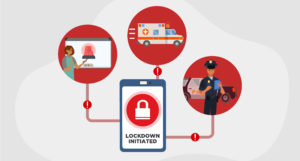On July 28, 2019, a school shooting occurred in Gilroy, California. Shortly after, two additional school shootings occurred one after another. One in El Paso, Texas and the other in Dayton, Ohio. Research suggests that violent incidents tend to lead to more violent incidents within a short period of time. This phenomenon is commonly referred to as “Contagion.”
The Media’s Role in Contagious Shootings
Sherry Towers, a faculty research associate at Arizona State University, discovered a “significant level of contagion” for mass killings and school shootings in her research. These contagious shootings usually receive more media coverage than regular shootings. This is dangerous because individuals struggling with mental health issues often take inspiration from previous violent incidents, especially when those incidents are given lots of media coverage. Individuals may even use the details shared to develop their own plans. Therefore, the more attention violent incidents are given by the media, the more an individual may want the attention for themselves.
Aside from giving too much coverage, the media has also been known to jump to conclusions. This happened during the Columbine High School shooting in 1999. As principal of the school, Frank DeAngelis recalled the tragedy during a recent Raptor webinar. “What bothered me with the media,” Mr. DeAngelis said, “is they reported information before [knowing if] it was accurate.” In order to minimize the spread of misinformation, the media should refrain from making judgements about the situation until credible information is received.
How to Identify Red Flags
In the same webinar, Mr. DeAngelis also advised schools to look for red flags. For example, individuals showing admiration for past incidents of violence and the people who committed them, would be considered a red flag. It is crucial to be aware of this type of behavior and report it, as it may help prevent a crisis from occurring in the future.
Just like school shootings, suicides can be contagious as well. For example, when a public figure commits suicide, it is common to see suicide rates rise consequently. Every student needs a go-to person at their school that they feel comfortable sharing with. Law enforcement and school resource officers (SRO) can be that person.
“Our job is not merely to make arrests,” Chief Craig Miller, Retired Chief of Police for the Dallas ISD Police Department, stated in an episode of School Safety Today. “[Our job] is to develop relationships with the students.” These relationships can help SROs recognize suicide warning signs and share their concerns with the school’s mental health team to ensure that the student receives the right help.
How to Protect Your Schools
Schools must be prepared to handle incidents of violence. Schools can leverage grant funding to invest in resources that will help students who are struggling with mental health issues. Schools should also have emergency management systems with mobile panic buttons that allow school personnel to instantly request the right level of help.
To learn more about how to protect your facilities and the people in them, download our Guide to K-12 Emergency Management or contact us to schedule a personalized demo.



